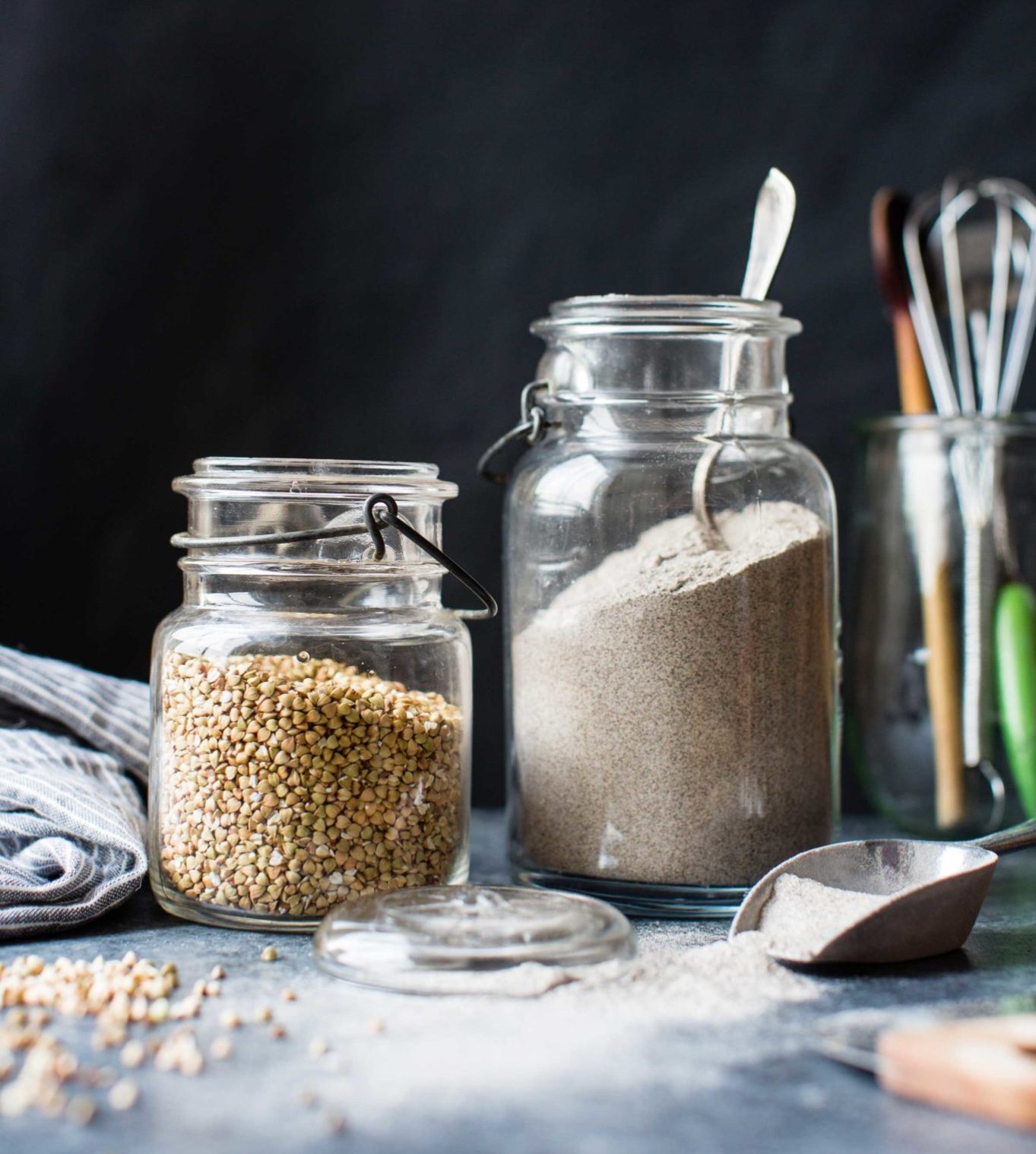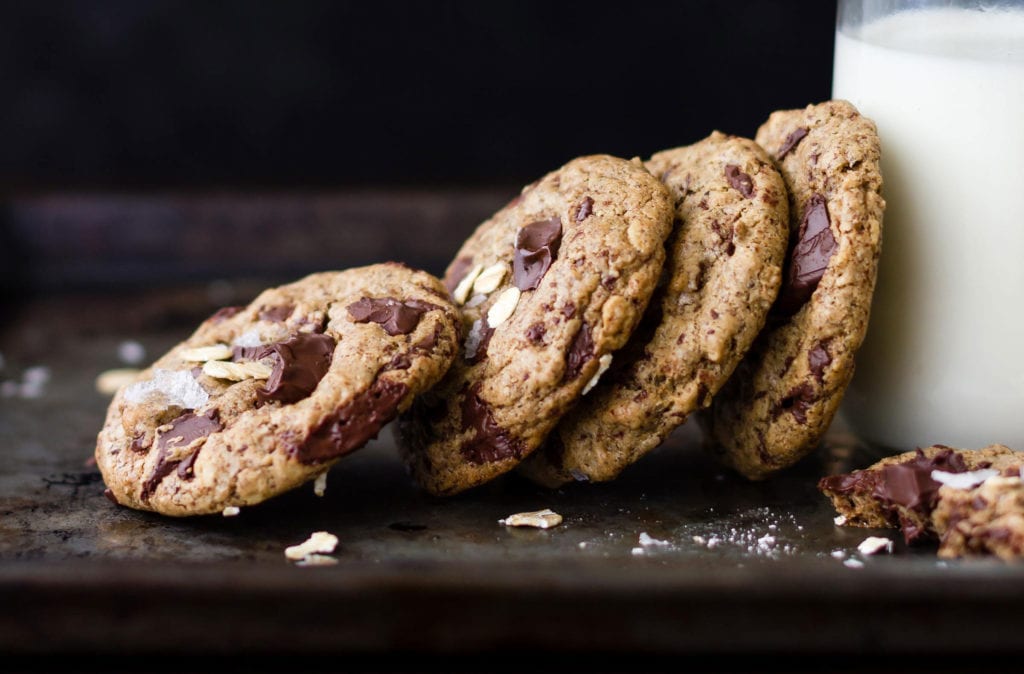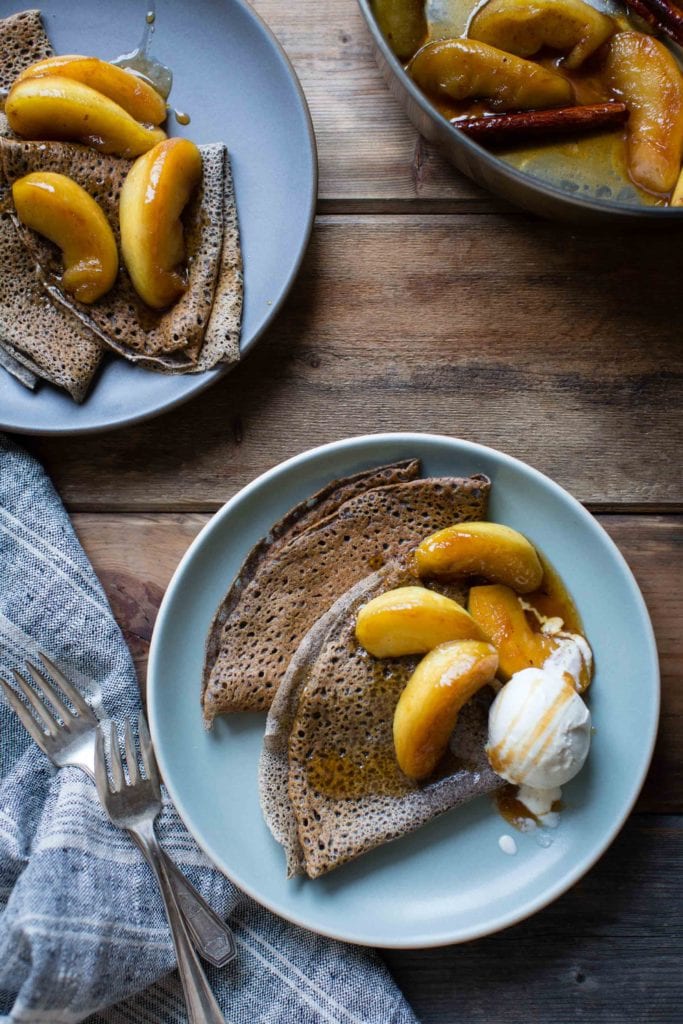How to Bake with Buckwheat Flour

Despite its confusing name, buckwheat is naturally free of wheat and gluten. But our exploration of the flour made from the earthy, nutritionally rich seed makes one thing abundantly clear: buckwheat should be part of your baking repertoire. Want to know how to bake with buckwheat flour? Keep reading.
By Alanna Taylor-Tobin and Cindy Rice
Buckwheat Flour Facts
Overview: Buckwheat isn’t related to wheat at all and is naturally gluten free. Native to northern Europe and Asia and available in charcoal- and lighter-colored flours, it hails from the pyramid-shaped seeds of a plant related to rhubarb and sorrel. Whether the flour is lighter or darker depends on whether the seeds were ground raw (lighter) or toasted (darker).
Buckwheat is grain-free and is not a grass like wheat–it is considered a “pseudocereal” since it is a complex carbohydrate and used like a cereal in recipes.
When buying buckwheat, look for certified gluten-free brands since buckwheat not processed in a GF-certified facility may have some risk of cross-contamination during processing.
Though an alternative “it” flour, buckwheat has been enjoyed since the eighth millennium BCE and commonly stars in French savory crepes, Japanese soba noodles, Eastern European kasha, and American pancakes.
Flavor: Robust, assertive and earthy, slightly grassy and herbaceous, with subtle notes of cinnamon, roasted hazelnuts, and chocolate. Some people also report tasting mild mushroom, “hoppy” and pleasantly bitter notes.
Uses: Buckwheat flour helps to create light and foamy, mildly earthy-tasting pancakes; firm, slurpy noodles that hold up well to many Asian sauces; and soft, dense cookies. When baking with buckwheat flour, for best results, do not over-mix batter and use buckwheat flour for only up to one-quarter to one-half of the total flour amount in a recipe (perhaps use a GF flour blend for the rest). The flavor profile of buckwheat pairs especially well with dried fruits, chocolate, warm, earthy spices and brown sugar.
Feel: Soft, starchy, delicate, usually non-clumping
Nutrition: High in protein, iron, zinc, and other minerals, as well as the amino acid lysine, buckwheat is said to prevent canker sores. Buckwheat is also high in protein and fiber and B vitamins. In traditional Chinese medicine, buckwheat is reputed to have warming properties and aid digestion.
Availability: Widely accessible in health-food stores and well-stocked grocers
Storage: Keeps refrigerated in an airtight container for up to one year
Recipes by Alanna Taylor-Tobin:
Buckwheat Chocolate Chip Almond-Butter Oatmeal Cookies
Buckwheat Cinnamon Swirl Biscuits with Cream Cheese Icing
More recipes:







One Comment on “How to Bake with Buckwheat Flour”
I never thought of using it for anything else, but for ployes.